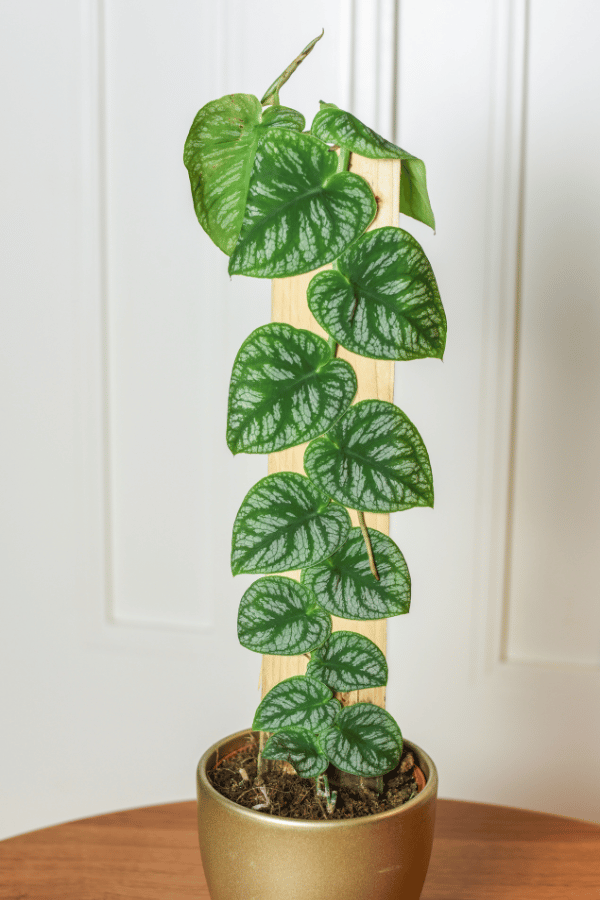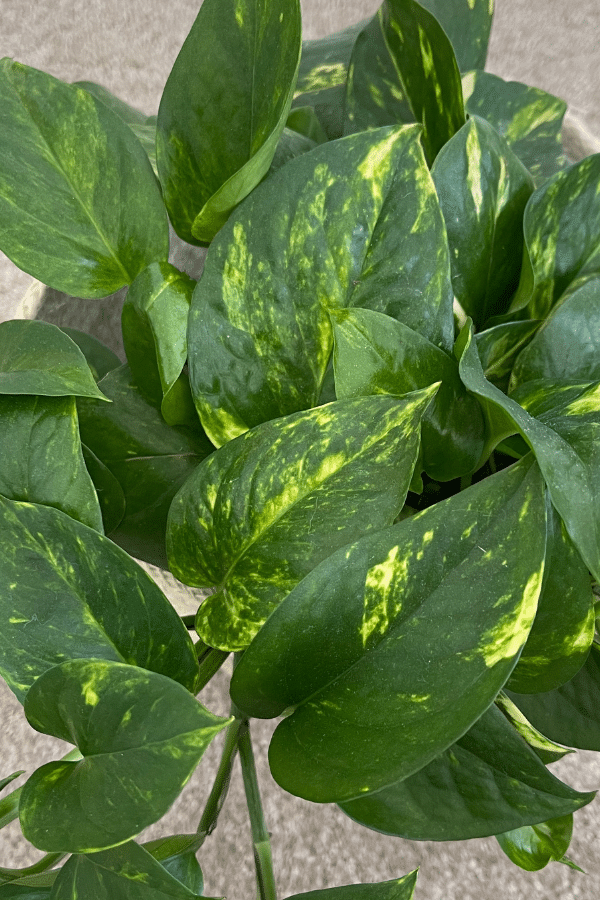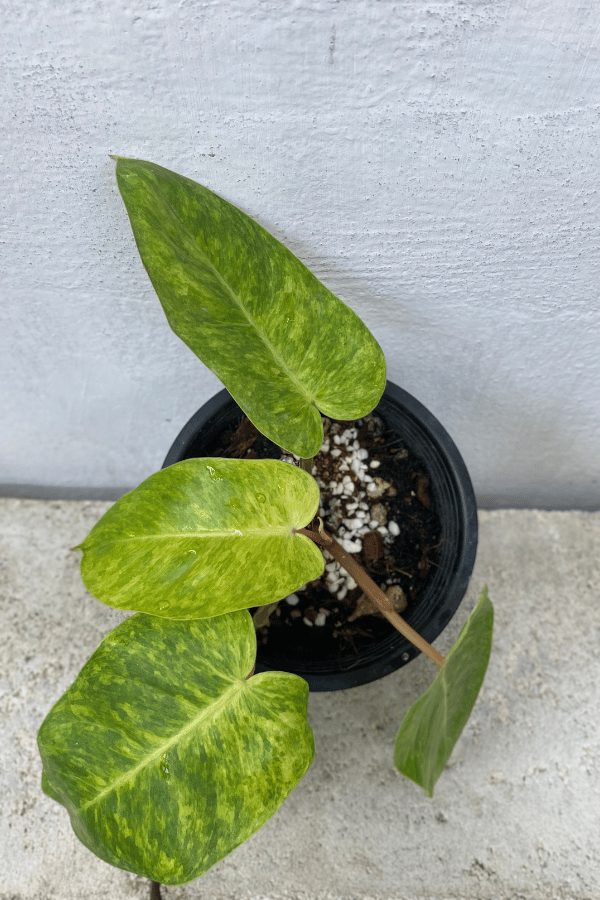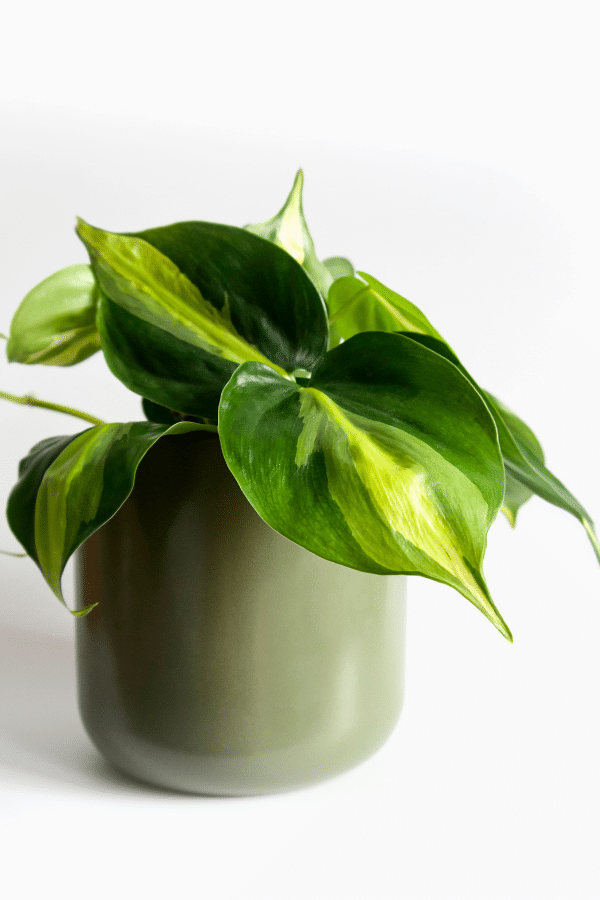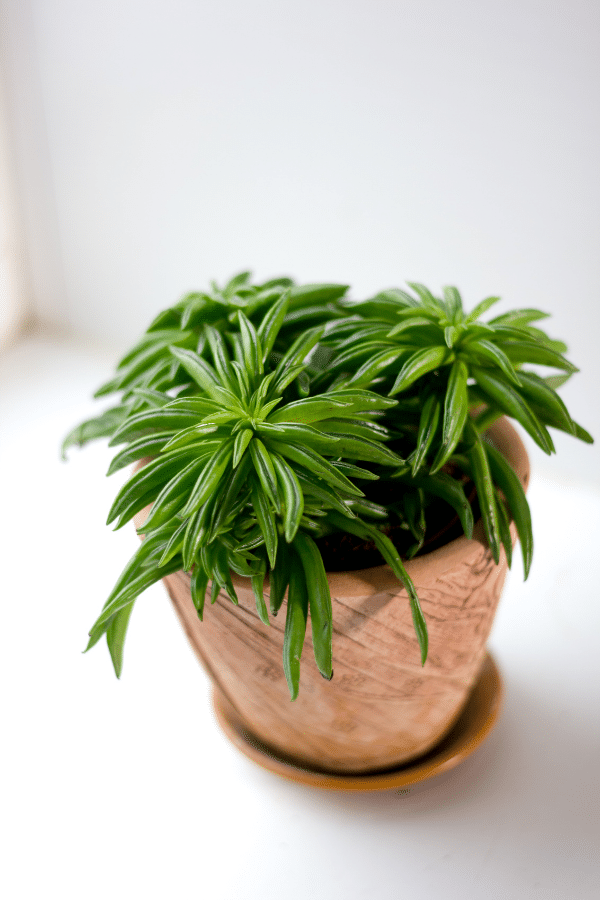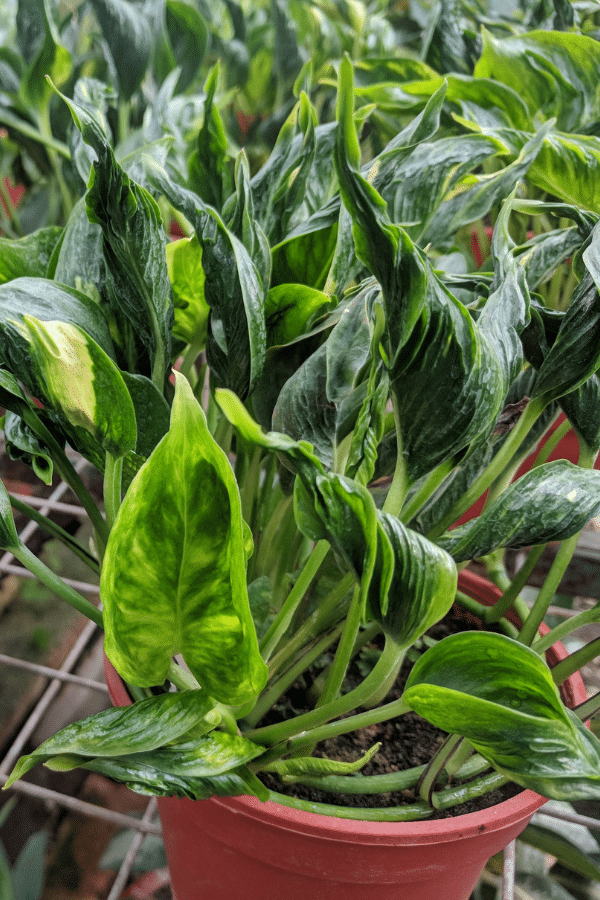String of Turtles
Scientific Name: Peperomia Prostrata
Common Name: String of Turtles
String of Turtles care is an easy Peperomia to grow and care for. This houseplant is dainty and beautiful and if you have a bright spot for a plant with room for it to trail, a String of Turtles plant may be for you.
To give this Peperomia plant the best care, it requires well-draining soil that is rich in nutrients, allow the soil to dry out before watering, provide it with bright indirect sunlight, temperatures ranging from 68-75F, and above average humidity levels.
Quick Care Overview
| Common Name | String of Turtles |
| Scientific Name | Peperomia Prostrata |
| Family | Piperaceae |
| Origin | Brazil |
| Growth Rate | Slow |
| Identification | Trailing houseplant with round leaves that’s leaves resemble a turtle shell |
| Height | Up to 12 inches tall |
| Soil | Well-draining soil mix |
| Water | Allow soil to dry out a bit, likes to remain moist |
| Temperature | 68-75F |
| Sunlight | Bright indirect sunlight |
| Toxic to Cats & Dogs | Yes |
| Toxic to Humans | Yes |
| Pests | Mealybugs, spider mites, fungus gnats, whitefly |
| Diseases | Root rot |
Below we will dive deep into this String of Turtles care guide.
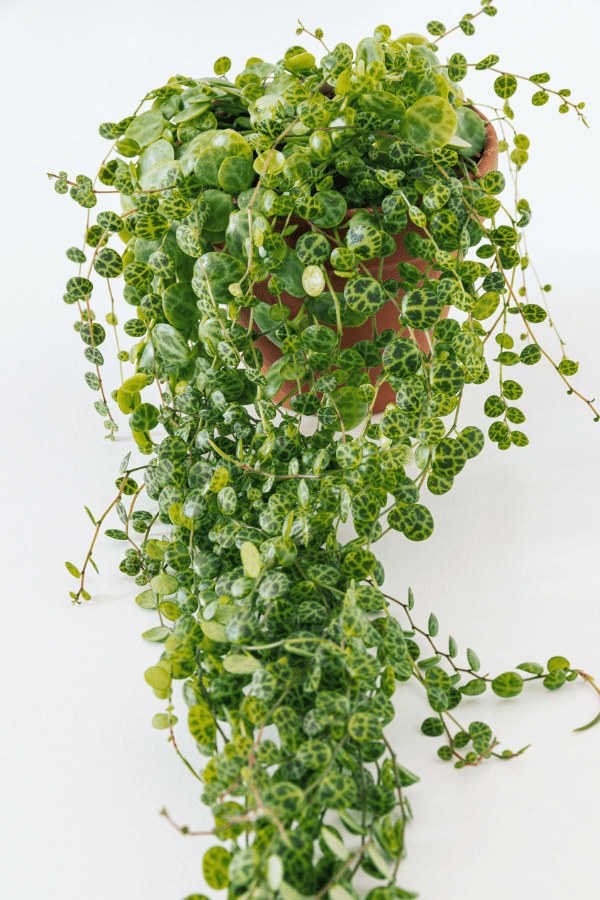
String of Turtles History
Brazilian native, Peperomia Prostrata, otherwise known as the string of turtles, is a tiny succulent that has become a very popular houseplant worldwide. Peperomia Prostrata is adored because of its compact size and slow-growth rate, making it perfect for small spaces.
String of Turtles Identification
The String of Turtles houseplant has foliage that looks like miniature turtle shells strung upon trailing vines. Each leaf has a multicolored pattern that becomes muted with age. Adult foliage is typically dark and light green.
String of Turtles Growth Facts
Due to its compact size and slow growth rate, this trailing plant is perfect for terrariums, fairy gardens, and small spaces. The string of turtles will reach maturity in 3-5 years.
How Big Does a String of Turtles Get?
Peperomia Prostrata will grow to become 12 inches long and 4 inches wide.

String of Turtles Care
Prized by many indoor gardeners, the String of Turtles needs a bit of TLC compared to most succulents. However, caring for this plant is not overly complicated.
String of Turtles Soil
It is important to note that a commercial potting mix indicated for succulents and cacti is not a suitable choice for the String of Turtles as this plant requires good drainage. However, a mixture of peat or coco coir, perlite, and some incorporations of compost or worm castings is ideal for your plant. The addition of sand will also help to aid in drainage.
String of Turtles Fertilizer
A diluted biweekly feeding from a balanced liquid fertilizer during the growing season will provide your String of Turtles with all of the vigor and strength it needs to be at its best. Do not fertilize during fall or winter.
String of Turtles Watering
Being native to the rainforests of Brazil, Peperomia Prostrata likes to remain consistently moist but not oversaturated. Therefore, let the top 2-3 inches of soil dry before rewatering.
String of Turtles Light Requirements
It is a common mistake with String of Turtles to place the container up high, such as on a bookshelf or hanging from the ceiling, without access to adequate light to the top of the plant to continue new growth. Ensure that your string of turtles receives plenty of bright indirect light. Keep in mind that too much direct sunlight will lead to scorching foliage.
String of Turtles Temperature & Humidity
Surprisingly, this succulent does not like being kept over 75 degrees Fahrenheit and prefers to be kept between 68 to 75 degrees Fahrenheit. It is also very sensitive to being cold, so ensure that you do not place it near cold windows, AC units, or drafts. String of Turtles likes to be kept in above-average humidity. It is best to keep this plant in a bathroom or add a humidifier or pebble tray.
Repotting String of Turtles
You should repot your String of Turtles every 1-2 years during the spring. Ensure that you are careful handling your String of Turtles during repotting, as they are very delicate plants. String of Turtles likes to stay in small pots, so replant in the same pot or a similar size container. Be sure the pot has drainage holes. Alternatively, you can pot it in a nursery pot and use a cachepot such as a basket to display your plant. Repot your plant, refresh the soil, tamp lightly, water thoroughly, and place in indirect light.
String of Turtles Maintenance & Pruning
Peperomia Prostrata should be pruned occasionally to keep it from looking leggy and unkempt. Periodically remove damaged, discolored, or dead stems with sharp, clean shears. Pruning will encourage new growth.
String of Turtles Propagation
You may quickly propagate your String of Turtles plant via cuttings. To propagate, snip off a few stem cuttings below a node that are at least 3 inches long. Remove any lower leaves near the cut stem. Place the cut end into soil or sphagnum moss. Ensure that at least one node falls below the surface of the soil. Water your soil thoroughly and place it in indirect light. Rooting hormone may be used, but it isn’t necessary. Roots should form within a few weeks.
String of Turtles Toxicity
Coming from the Peperomia genus, String of Turtles is considered non-toxic to humans, cats, and dogs, String of Turtles is safe around your furry friends, however, plants still should not be ingested.
Toxicity to Humans
String of Turtles is considered not toxic to humans.
Toxicity to Cats & Dogs
String of Turtles is considered not toxic to pets, however, don’t let your animals ingest this plant.

String of Turtles Problems
String of Turtles Leaves Turning Yellow
When leaves of String of Turtles turn yellow, it is often due to lack of sunlight or watering issues.
String of Turtles Leaves Turning Brown
When foliage of String of Turtles turns brown (or red), it is often due to either too much direct sunlight or issues related to overwatering, such as root rot.
String of Turtles Diseases
While largely disease-resistant, String of Turtles may still suffer issues, often related to overwatering. Root rot is the largest cause of death when it comes to the string of turtles. Ensure that you do not overwater your plant and that you do not allow it to rest in standing water within the plant’s drainage tray.
String of Turtles Pests
String of Turtles is considered relatively pest-resistant. However, they are not immune to infestation and may become susceptible to common pests such as spider mites, whiteflies, or mealybugs. Isolate your plant and treat it with a pesticide such as a neem oil or insecticidal soap upon identifying an infestation.
FAQ
Is String of Hearts and String of Turtles the Same?
Coming from two separate families, the String of Turtles and the String of Hearts are completely different plants. String of Turtles comes from the Piperaceae family being a Peperomia while the String of Hearts comes from the family Apocynaceae.

